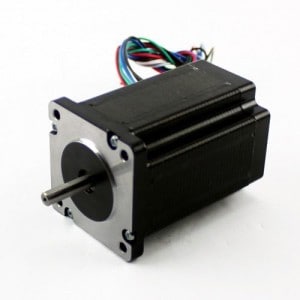When using direct current motors, one of the main issues is the lack of precision when starting and stopping the motor. In order to deal with this issue, there are motors with independent excitation. We are referring to the step motor, whose inductor is powered using an external power source. Thus, in order to change its speed, you only need to modify and control the exciting current.
You can buy stepper motor at https://www.automationtechnologiesinc.com/products-page/stepper-motors.
These electromagnetic, incremental, or rotary devices, turn digital pulses into mechanical rotation.
The rate of rotation is proportional to the number of pulses generated, while the rotation speed depends on the frequency of such pulses. The pulses are ultimately defined by a predetermined angle, which is fed by a programmable device.
This is the best solution as long as the system’s inertia is low; in other words, as long as acceleration and deceleration times are not long.
Broadly speaking, step motors are applied on solutions where motion precision is paramount: hard disk heads, printers, small healthcare technology, etc.

Advantages of step motors:
- Higher motion and movement repetition accuracy.
- Step error under 5%.
- Perfect start and stop responding.
- Reliable and durable, since they have no brush contact.
- Rotation angle proportional to input pulses.
- Great range of rotational speeds, since it responds to the digital input pulse frequency.
Servomotors: the evolution of the step motor
These are step motors with integrated control electronics. This means that these motors allow for control of their position and motion, being able to control rotation down to exact degrees.
They do not see much use at an industrial level due to their high price, but their sales are gradually increasing. They are mostly used in model aircraft and robotics.